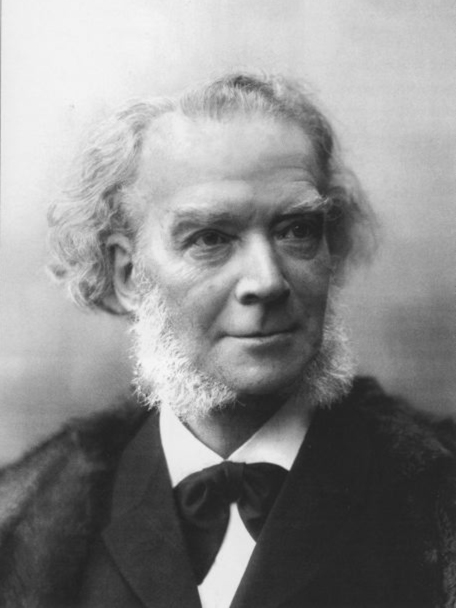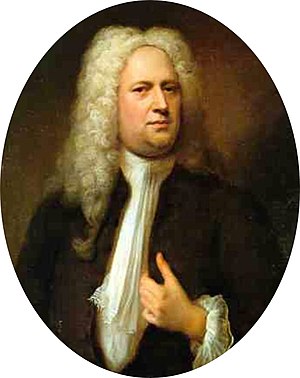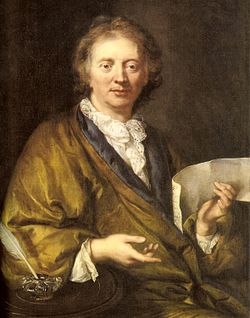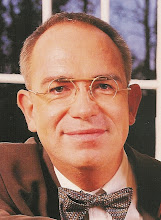02 February 2017
27 January 2017
15 January 2017
18 September 2016
Oldest Fish-Hook: ca. 23000 years old
http://www.sciencemag.org/news/2016/09/world-s-oldest-fishhook-found-okinawa?utm_source=newsfromscience&utm_medium=twitter&utm_campaign=oldhook-7480
http://www.sciencemag.org/news/2016/09/world-s-oldest-fishhook-found-okinawa?utm_source=newsfromscience&utm_medium=twitter&utm_campaign=oldhook-7480
27 August 2016
27 July 2016
25 July 2016
09 May 2015
07 May 2015
16 January 2015
23 March 2013
J S Bach: Goldberg Variations BWV 988, Variation 13, performed by Robert Hill, harpsichord (2012)
J S Bach: Goldberg Variations BWV 988, Variation 13, performed by Robert Hill, harpsichord (Aachen, Dec. 1, 2012)
J S Bach: Canzona in D Minor BWV 588, performed by Robert Hill, organ (1991)
J S Bach: Canzona in D Minor BWV 588, performed with the ornamentation in the "Möller Manuscript" by Robert Hill, organ (1991)
22 March 2013
Matthias Weckmann: Toccata in E Minor, performed on lute-harpsichord by Robert Hill (2007)
Matthias Weckmann: Toccata in E Minor, performed on lute-harpsichord by Robert Hill (Freiburg, October 2007)
Bohuslav Martinu: Harpsichord Concerto, third movement, Robert Hill, harpsichord with the Holst Sinfonietta Freiburg
Bohuslav Martinu: Harpsichord Concerto, third movement, performed by Robert Hill, harpsichord, with the Holst Sinfonietta, directed by Klaus Simon (live, Freiburg, October 2010)
J S Bach: Fugue in E Major BWV 854, a pedagogical video performed by Robert Hill, harpsichord
J S Bach: Fugue in E Major BWV 854, pedagogical video performed by Robert Hill (Freiburg, October 8, 2010)
W A Mozart: Andante con espressione KV 311/ii, performed by Robert Hill, fortepiano (2011)
W A Mozart: Andante con espressione from the Piano Sonata in D Major KV 311, performed by Robert Hill, fortepiano (Freiburg, February 1, 2011)
J S Bach: Partita in B-flat Major BWV 825, Allemande, Robert Hill, harpsichord (2102)
Allemande from the Partita in B-flat Major BWV 825, performed by Robert Hill (Basel, September 28, 2012)
J C F Fischer: Prelude & Chaconne in F Major, Robert Hill, harpsichord (2012)
J C F Fischer: Prelude & Chaconne in F Major, performed by Robert Hill, harpsichord (Basel, 28 September, 2012)
J. Brahms: Intermezzo in B-flat Minor Op. 117 No. 2, Robert Hill, piano (2012)
J. Brahms: Intermezzo in B-flat Minor Op. 117 No. 2, performed by Robert Hill, piano (Yamaha), Basel, May 12, 2012
04 March 2011
Metric Manipulations in Haydn and Mozart: Chamber Music for Strings, 1787-1791
Metric Manipulations in Haydn and Mozart: Chamber Music for Strings, 1787-1791. by Danuta Mirka. (Oxford Studies in Music Theory.) Oxford: Oxford University Press, 2009
from NOTES (2010): Danuta Mirka has produced an ambitious book that seeks to combine disciplines whose triple union would have seemed improbable some decades ago. Admittedly, music theory and cognitive psychology will not seem unlikely bedfellows today, but the author's scrupulous account of late-eighteenth-century metric theory provides her discussion with a "historically informed" air that should appeal to readers otherwise but moderately invested in bar-by-bar analysis of individual works. While the resulting discussion, may at points seem eclectic, the author argues that the tools for metric analysis developed by American theorists in the past decades are eminently compatible with the approach of eighteenth-century writers, and so the combination of these fields is no arbitrary act but rather the realization of an inherent kinship, indeed, most of Mirka's theoretical sections could be described as "sorting out" the analytical toolbox developed primarily after Fred Lerdahl's and Ray Jackendoff's A Generative Theory of Tonal Music (Cam-bridge, MA: MIT Press, 1983) with an eye at historical music theory. In this regard, Metric Manipulations in Haydn and Mozart exemplifies--if not pioneers--a sort of "synthetic analysis" that should hopefully prove an inspiration for theorists in other areas as well.
from NOTES (2010): Danuta Mirka has produced an ambitious book that seeks to combine disciplines whose triple union would have seemed improbable some decades ago. Admittedly, music theory and cognitive psychology will not seem unlikely bedfellows today, but the author's scrupulous account of late-eighteenth-century metric theory provides her discussion with a "historically informed" air that should appeal to readers otherwise but moderately invested in bar-by-bar analysis of individual works. While the resulting discussion, may at points seem eclectic, the author argues that the tools for metric analysis developed by American theorists in the past decades are eminently compatible with the approach of eighteenth-century writers, and so the combination of these fields is no arbitrary act but rather the realization of an inherent kinship, indeed, most of Mirka's theoretical sections could be described as "sorting out" the analytical toolbox developed primarily after Fred Lerdahl's and Ray Jackendoff's A Generative Theory of Tonal Music (Cam-bridge, MA: MIT Press, 1983) with an eye at historical music theory. In this regard, Metric Manipulations in Haydn and Mozart exemplifies--if not pioneers--a sort of "synthetic analysis" that should hopefully prove an inspiration for theorists in other areas as well.
17 February 2011
Link to CD shop ClassicsOnline.com
The Online Classical Music shop ClassicsOnline.com sells many of my earlier CD releases, also for download.
26 June 2010
YouTube videos
Here is a link to the most recent video on my YouTube channel (channel username "earlymus").
http://www.youtube.com/watch?v=Wej4lUxhjrA
At the moment I have 87 videos of live performances, as well as a few single takes from studio situations.
http://www.youtube.com/watch?v=Wej4lUxhjrA
At the moment I have 87 videos of live performances, as well as a few single takes from studio situations.
05 May 2008
Christiaan Huyghens Revisited
03 May 2008
01 May 2008
27 April 2008
W. F. Bach: Polonaise in E Minor
Recorded in 2005 during an open-air concert, on my Cristofori-style fortepiano by Keith Hill.
26 April 2008
Carl Philipp Emanuel Bach - Double Concerto for Fortepiano and Harpsichord (H 479)
First Movement
Second Movement
Third Movement
Robert Hill, fortepiano, Leon Berben, harpsichord, Musica Antiqua Köln. This is a studio recording made ca. 2003.
25 April 2008
J. S. Bach: Adagio from Violin Sonata in G Minor BWV 1001
J. S. Bach: Adagio from Violin Sonata in G Minor BWV 1001, in my transcription to C Minor, recorded live in May 2004
22 April 2008
Domenico Scarlatti: Sonata in D Minor K 517 Prestissimo
Recorded in May 2007 as part of my recital program "Scarlatti in London".
21 April 2008
W. A. Mozart: Adagio from Sonata KV 284 on fortepiano
This is variation XI from the closing movement of the D-Major Sonata KV 284.
20 April 2008
J. S. Bach: Prelude in F Minor BWV 857 (WTC I) played on a Steinway
From time to time I perform on a modern Steinway, here is one excerpt.
D. Scarlatti: Sonata in A Major, K.208 on fortepiano
19 April 2008
J. L. Adam: Romance for Fortepiano, updated
An update of an earlier post, this time as a YouTube video with scrolling score.
An interesting online metronome

www.webmetronome.com
I like it because it allows you to work with BPM slower than the usual 30-40 BPM offered by most metronome designers. Programmable beat patterns are also cool.
Postscript: Having received some rather astonished reactions to this post, here a few of my thoughts on the subject of metronomes. I am quite sure that musicianship meant something else than we are generally accustomed to today in the classical world, before the metronome (commercially available in a portable form from ca. 1810) was fully integrated into music instruction (probably rather late in the 19th century, although I don't know of any research on this topic).
My interest in metronomes is two-fold: Certain metronomes (in particular Dr. Beat, and now this online web metronome) can be programmed to click at very slow rates. For example MM=15 represents one beat per bar at quarter-note=MM60 in 4/4 time. I use a very slow beat to train myself to play freely within the bar, while maintaining an awareness that I will have to (in principle) land together with the metronome beat on the next downbar. This kind of musical tension is altogether different than playing with a quicker beat, but also different from trying to play freely, without regard for an underlying pulse. In a way, you could say that the one-beat-per-bar practice method instills skills necessary for the development of tempo rubato in its stricter sense of making up what you have stolen. See also Roger North on the "grand beat" (although we can't say for sure that a slow pulse is what he had in mind).
As far as the programmable beat patterns are concerned, I am simply fascinated by tools that allow me to control what they do easily. I could see this metronome as quite useful for learning bits of the Carter Sonata, for example, or other 20th-C. pieces that have frequent meter changes. But even in the 18th century there is the tradition of Imbroglio which allowed for patches in one meter to be inserted in a movement in another meter. J. S. Bach, for one, is often to be found experimenting with displaced accents that amount to a temporary meter change.
17 April 2008
Carl Philipp Emanuel Bach: Fantasia in C Minor on Clavichord
Last week the Musikhochschule Freiburg held a "Tastenfest", a five-hour keyboard extravaganza in memory of Hans-Jörg Koch, a colleague who died last year, much too soon.
This performance on clavichord (by Keith Hill, 1993 after Hubert) of Carl Philipp Emanuel Bach's closing Probestück, the Fantasia in C Minor, took place in a large concert hall for ca. 650 people. It was sandwiched between two Sonatas for prepared piano by John Cage and a stunning improvisatory organ piece Gebrochene Flügel (1975) by Tilo Medek.
A "Photograph" from the 1790's?

I couldn't resist adding this, even though it is only in spirit related to the subject of this blog.
This picture of a leaf made by laying it on silver nitrate coated paper may well be one of the earliest photographs ever made, dating back to the 1790's or early 1800's, from the circle of the Englishman Henry Bright. See the New York Times article
14 April 2008
Basso continuo class

I regularly offer masterclass style instruction in advanced basso continuo performance, concentrating on the style of the realisation. Here are a few short excerpts to convey the feeling of the class.
13 April 2008
Francis Planté plays Chopin
Francis Planté (1839-1934) This film contains a short excerpt of Planté playing Chopin's Etude Opus 10 Nr. 7. The film is silent newsreel footage taken during Planté's recording session in 1929. Planté, who heard Chopin play, may well be the oldest keyboardist of the mid-19th century who can be seen actually performing with preserved audio. For the oldest keyboardist, and possibly the oldest musician, ever to make a recording, see the entry below for Carl Reinecke.
11 April 2008
Bach's Temperament?


There is now general agreement that the decorative doodle at the top of an autograph manuscript of the Wohltemperirte Clavier is a diagram encoding a well-tempered tuning. As the three papers below show, there is not a consensus on how to interpret the diagram.
In a nutshell, the diagram is understood to represent instructions on how to temper the twelve fifths in a tuning system. Counting from right to left, there are five circles with each two circles inside, followed by three circles without any internal circles, followed by three circles with only one circle inside each. These circles totaling only eleven, rather than twelve, there is some disagreement about how to understand the value of the twelfth and final circle. At the moment I prefer the reading that sees the little circle on the far left as representing an empty circle.
There is further disagreement about how to interpret the three kinds of circles. I currently prefer to see the simple circles as representing pure fifths, and the total of thirteen inner circles as the number of parts into which the so-called Pythagorean comma is divided. The five fifths at the right of the diagram are all narrowed equally by an amount that is twice that of the three fifths at the left, which are to be each narrowed by one part. I rather like the results that emerge when you temper the latter three fifths by narrowing them at a rate of around one beat per second (MM= 60), and the five fifths on the right at a rate of around two beats per second (MM=120),
starting with E at the left:
E-B pure
B-F# narrow by ca. 1 beat per second
F#-C# "
C#-G# "
G# - E-flat pure
E-flat - B-flat pure
B-flat - F pure
F-C narrow by ca. 2 beats per second
C-G "
G-D "
D-A "
A-E "
I find the resulting temperament highly energized, but not over-wrought, and certainly not polarized in any way. After listening to it recently for a couple of hours, I found it quite refreshing.
Bach's Temperament: Three Articles on the Interpretation of the Diagram on the Titlepage of the Wohltemperirte Clavier Part I
See also: J. C. Francis' website http://bach.tuning.googlepages.com/home
10 April 2008
07 April 2008
José Iturbi plays Rameau on a Pleyel harpsichord
Historical performance practice of a different sort. This is the only historical video I am familiar with of someone demonstrating a Pleyel harpsichord. José Iturbi (1895-1980) studied harpsichord with Wanda Landowska at the Paris Conservatoire. He plays Rameau's Rigaudon, Musette and Tambourin (the film appears to have been made around 1940).
21 March 2008
Johann Sebastian Bach's Birthday! Contrapunctus I from the Art of Fugue

Contrapunctus I from the Art of Fugue
The picture compares the well-known Hausmann portrait of Bach (1746) with a recent computer-aided reconstruction by Caroline Wilkinson for the Bachhaus Eisenach. From Der Spiegel, February 28, 2008. The following picture shows how she arrived at her reconstruction.

18 March 2008
Teaching Demonstration: F. Couperin, Les Charmes
In this video I demonstrate my method for "capturing" the quality of movement in a piece by doing a "Tonsatz" or continuo-like reduction, leaving out as much ornamental or decorative information as possible. Once captured, I "overlay" the full version over the practiced-in Tonsatz version, which helps me to understand quickly the final result I want to achieve.
08 March 2008
C. P. E. Bach's Birthday!

In honor of Carl Philipp Emanuel Bach, here the Adagio in E-flat Minor from his Württemberg Sonata in E-flat Major.
04 March 2008
Vivaldi's Birthday! Largo BWV 972
25 February 2008
Chopin First Editions Online

F. Chopin Preludes for Piano Opus 28 (1839)
I came across this outstanding web resource tonight: the Chopin Early Editions collection of digitized facsimiles put out by the University of Chicago. Here is the link
http://chopin.lib.uchicago.edu/
Carl Reinecke Playing the Larghetto from Mozart's Coronation Concerto

One of the most significant historical recordings is surely this Welte-Mignon piano roll recorded by the 80-year-old Carl Reinecke in January, 1905. Reinecke is thus probably the oldest instrumentalist on record. With a 35-year tenure as conductor of the Gewandhaus Orchestra in Leipzig, Reinecke occupied a central position in German musical life in the second half of the 19th century.
Reinecke is today best known for his compositions, but in his own day he was appreciated as a connoiseur of Mozart's music. Here Reinecke with his own transcription of the Larghetto from Mozart's Piano Concerto in D Major, KV 537.
Download link:
http://www.divshare.com/download/3870989-655
24 February 2008
Haydn on a 1798 Broadwood

In February 2007 I played a fortepiano recital entitled Haydn in London at the Neumeyer-Junghanns-Tracy Collection of Historical Keyboard Instruments in Bad Krozingen, near Freiburg. I used several instruments, among them a fine Broadwood from 1798.
Here the encore, an Adagio by Haydn:
23 February 2008
Händel: Suite in F Major, Adagio
Here the opening Adagio of Händel's F-Major Suite, performed on my fortepiano after Cristofori. Händel is known to have had regular access to a Florentine fortepiano at the home of friends of his in London from the 1730's onward.
22 February 2008
Francois Couperin: Allemande à 2 Clavecins
21 February 2008
Mozart versus Clementi
is the title of a fortepiano recital program I performed at the Musikhochschule Freiburg on 28 January 2008. On Dec. 24, 1781, Wolfgang Amadeus Mozart and Muzio Clementi performed in a competition with each other at the court in Vienna, by command of the emperor. This program is a reconstruction of a "virtual" competition between the two composer-pianists, in order to directly compare them as pianists and as piano composers.
The opening piece on my recital was Clementi's Sonata in B-flat Major, Opus 47, Nr. 2, which he performed during the competition before the emperor.
Fortepiano: Keith Hill, 1998 after Anton Walther (Vienna, ca. 1795)
M. Clementi: Sonata in B-flat Major Opus 47, Nr. 2 (1781): Allegro con brio
M. Clementi: Sonata in B-flat Major Opus 47, Nr. 2 (1781): Andante quasi Allegretto
M. Clementi: Sonata in B-flat Major Opus 47, Nr. 2 (1781): Rondo Assai Allegro
The opening piece on my recital was Clementi's Sonata in B-flat Major, Opus 47, Nr. 2, which he performed during the competition before the emperor.
Fortepiano: Keith Hill, 1998 after Anton Walther (Vienna, ca. 1795)
M. Clementi: Sonata in B-flat Major Opus 47, Nr. 2 (1781): Allegro con brio
M. Clementi: Sonata in B-flat Major Opus 47, Nr. 2 (1781): Andante quasi Allegretto
M. Clementi: Sonata in B-flat Major Opus 47, Nr. 2 (1781): Rondo Assai Allegro
Mozart Sonata in C Major KV 330
As the second work in the Mozart versus Clementi program from 28 January 2008, I played Mozart's C-Major Sonata KV 330:
Allegro moderato
Andante cantabile
Allegretto
Allegro moderato
Andante cantabile
Allegretto
27 January 2008
Mozart's Birthday! Piano Concerto in A Major KV 414: Larghetto
Mozart intended that certain piano concerti of his could be performed as chamber pieces with solo strings. Here from a performance with my chamber ensemble L'Ottocento from April 2006, the Larghetto from his A-Major Concerto KV 414.
24 January 2008
Clementi's Birthday! Gradus ad Parnassum #42

In May 2007 I presented a keyboard recital entitled Scarlatti in London, in which I focussed on the reception of Domenico Scarlatti's solo keyboard music in England in the later 18th and early 19th century. I performed on harpsichord and two fortepiani.
Here from Muzio Clementi's Gradus ad Parnassum (1817), Nr. 42: Finale Allegro vivace.
Instrument: Neupert (ca. 1988) after L. Dulcken (Munich ca. 1805)
Wilhelm Friedemann Bach: Polonaise in E Minor

My most recent CD release is on Naxos: W. F. Bach Keyboard Works Vol. 1: Twelve Polonaises, Sonata in D Major, Fantasia in A Minor. In January 2008 this disc was awarded the Diapason d'Or from Diapason magazine in France.
Here a live performance of the E-Minor Polonaise, recorded during the Fest der Innenhöfe in Freiburg in July 2005. This was an open-air performance in the courtyard of the Historische Kaufhaus in Freiburg. Fortepiano by Keith Hill 1999 after B. Cristofori (Florence, ca. 1720)
02 January 2008
Veracini's Birthday! Violin Sonata in F Major

On Feb. 4, 2005, I played a duo-recital with Gottfried von der Goltz at the Musikhochschule Freiburg. As the final piece in the program we played Francesco Veracini's Violin Sonata in F Major. Here the Introduction.
15 December 2007
Farnaby Prelude on Lautenclavier

On February 4, 2005 I played a duo-recital with Gottfried von der Goltz, leader of the Freiburg Baroque Orchestra and Professor of Violin and Baroque Violin at the Musikhochschule Freiburg, on the theme "Fantasia". I included a set of Giles Farnaby pieces performed on a lautenclavier (a harpsichord with gut strings) by Keith Hill (1993).
Here a short Prelude in C Major:
12 December 2007
On the Sunny Side of the Street
Not strictly a live performance -- I took advantage of a short break during a studio recording in 2006 to try a solo piano version (on a 1930s Bechstein) of this classic.
06 December 2007
J. S. Bach: Italian Concerto BWV 971: Andante
From my harpsichord recital in the Anna-Kirche during the Aachener Bachtage in Aachen in November 2005, the Andante.
Harpsichord by Keith Hill, 1997, after P. Taskin, 1769
Harpsichord by Keith Hill, 1997, after P. Taskin, 1769
03 December 2007
Jean Louis Adam: A Tribute

Today is the 249th anniversary of the birth of Jean Louis Adam, an important figure in the establishment of the piano in the conservatory curriculum. Eclipsed in fame by his son, the composer Adolphe Adam, J. L. Adam (1758-1848) was highly respected in his own time, not the least for his Méthode de Piano du Conservatoire (Paris, 1805).
Here, in a concert from 2005, his Romance from the Méthode. I played my Cristofori-model fortepiano (K. Hill, 1999) for this performance, using the "una corda" stop, a sliding keyboard mechanism normally only used for tuning purposes, but which creates a distinctive, not to say magical, timbre.
24 November 2007
J. S. Bach: 6-part Ricercar from the "Musical Offering" BWV 1079
On Oct. 25 and 26, 2007, the Symphony Orchestra of the Freiburg Musikhochschule, under the direction of Prof. Scott Sandmeier presented a program of transcriptions of works by J. S. Bach. Prof. Sandmeier and I jointly developed a program concept that in part juxtaposed Bach's original version of a work with its transcribed version. So, for example, the 6-part Ricercar from the "Musical Offering" first on solo harpsichord, then in the transcription for orchestra by Anton Webern. Here the harpsichord version of the Ricercar à 6 from the Oct. 26 performance.
Instrument after P. Taskin (Paris, 1769) by Keith Hill (1998)
Instrument after P. Taskin (Paris, 1769) by Keith Hill (1998)
15 November 2007
Improvisation on the Bass of the Goldberg Variations
This recording is now 15 years old, and ought to be in the archives, but the file happened to be available while I was experimenting to get this blog online. I performed this improvisation in May 1993 as part of my inaugural recital for my position as Professor of Historical Keyboards at the Musikhochschule Freiburg. The improvisation, together with the complete 1993 live performance of J. S. Bach's Goldberg Variations BWV 988 is available from Music & Arts records.
Harpsichord: Keith Hill 1993 after Pascal Taskin (Paris, 1769)
Harpsichord: Keith Hill 1993 after Pascal Taskin (Paris, 1769)
Subscribe to:
Posts (Atom)











